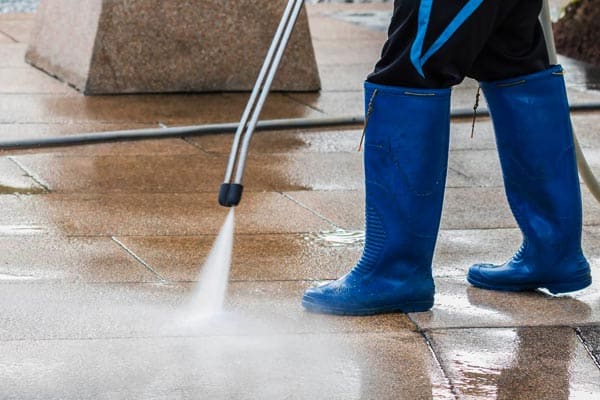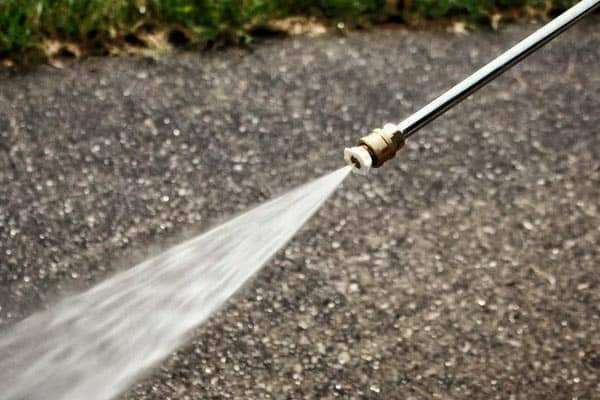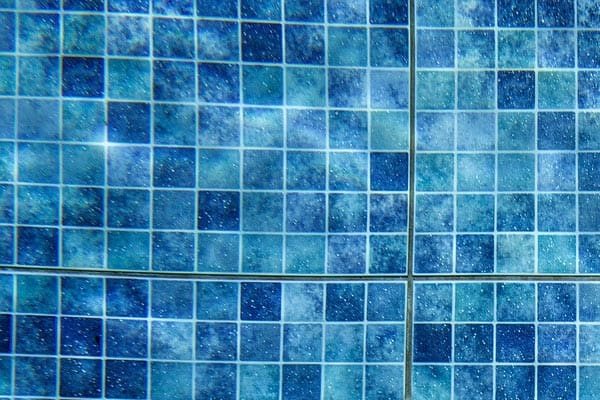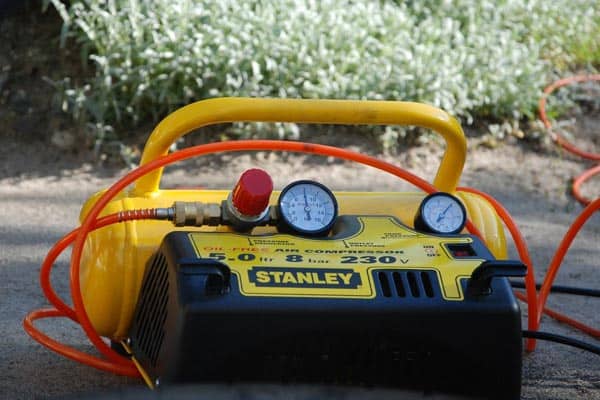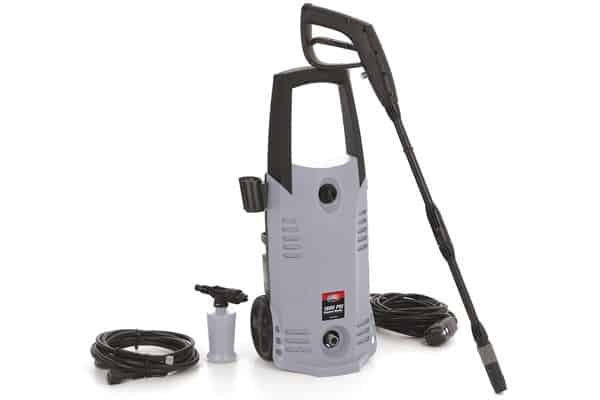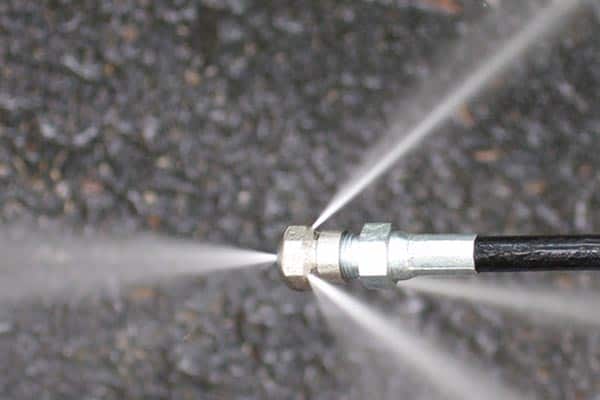Why Power Washing Can Damage Concrete if You do it Incorrectly
Pressure washing your concrete around your home or business is one productive way to spend the afternoon in a low-stress environment.
A good session with your pressure washer will help erase years of built-up grime from almost any surface, including different grades of concrete in your driveway, walkways, and more.
But, can pressure washing cause damage to the concrete?
If you pressure wash your concrete incorrectly, it can cause irreversible damage to the surface of the concrete.
In turn, this turns this satisfying cleaning project into a huge nightmare, and this is why you have to know what you’re doing before you take on this project.
We’ve put together tips for you to follow to avoid damaging your concrete, help you understand what makes concrete more susceptible to damage, and more below.
Pressure Washing Your Concrete is Necessary for Routine Maintenance
No matter if you have a commercial or residential property, using a pressure washer on your concrete surfaces around the property is a great way to get a shot of curb appeal while keeping everything looking new.
A traditional garden hose works too but doesn’t come close to the results you’ll get with a pressure washer as this machine can help you get rid of built-up dirt and grime from the seasons changing, remove oil or chemical stains, and extend the life of your concrete. It can also strip weeds out without having to use harsh chemicals.
You can buy your own pressure washer or rent one from your local home improvement store.
You do want to consider wearing safety goggles and avoiding direct contact with the water when it runs. If the machine dislodges gravel, it can send it with other debris flying as you work.
How Pressure Washing Concrete Can Damage It
Your pressure washer is a very powerful machine, and it can cause visible damage to the surface of your concrete if you don’t use it correctly.
Using the incorrect nozzle for the project is one of the most common ways people accidentally cause damage to the concrete.
You want to use the widest nozzle you have in your arsenal for flat, large surfaces to encourage the water to flow evenly across your surface.
Putting a direct nozzle tip on and using it is very likely to break your concrete apart, and this will result in pitting cracks, and degradation of the concrete’s surface. Over time, the cracks will spread further apart, which will shorten your concrete’s lifespan.
If you use too narrow of a nozzle on surfaces made out of bricks or pavers, it can easily damage the mortar between the material or get rid of the joint sand between the stones. In turn, weeds will sprout up between the stones and cause your surface to be uneven and unsafe to walk on.
Holding the nozzle too close to the surface of your concrete as you spray is another common way people damage their concrete, and you should always take a few steps back when you’re ready to start.
Holding the nozzle too close to the concrete’s surface will make the spray uneven and apply far too much pressure to a single area.
For the best-looking product, you want to stand 10 feet back from the concrete and slowly walk forward until the spray starts to remove debris efficiently.
Pressure washing is a very satisfying project to take on, and you get immediate results. However, too much of a good thing exists, and pressure washing your concrete too frequently will cause the surface of your concrete to wear down much quicker.
You should hold off, and only pressure washes your concrete once a year to avoid decreasing your concrete’s longevity.
Factors That Make Concrete Susceptible to Damage
There are several factors that can make your concrete more susceptible to damage from the pressure washer. These factors include but are not limited to:
Age
You should hold off on pressure washing a freshly poured concrete slab for some time because it can easily weaken the bonding between the different elements in the concrete.
Avoid pressure washing new concrete for several months to give it time to bond and settle to create a stable and firm surface.
Frequency
Nobody likes to see grime, dust, or dirt in the concrete around their home or business, but you don’t want to regularly pressure wash it.
Doing so over and over again is a great way to make it weak, and it increases the chances of your concrete developing cracks or other damage.
Instead, you should clean your concrete with your machine once or twice a year at the very most. It makes an excellent spring project.
Quality
Bad or low-quality concrete will form with holes in it that will absorb water very quickly. When water starts to absorb into your concrete, it can weaken the bodes and cause damage that will eventually open up into cracks. Over time, the cracks will widen and make the surface unstable.
Too Much Pressure
The powerful jet of water your pressure washer creates can damage your concrete’s character and leave visible lines or etching on the surface.
However, pressure washers allow you to adjust how powerful the jet is, so you can make it gentle enough to clean without causing damage. Don’t concentrate the spray in one area when you use it to prevent the pressure from building up.
How to Tell if You Have Damaged Concrete
Concrete may be among the strongest materials available to build with, but it’s not immune to wear and tear.
Spalling, cracks, and other imperfections can easily develop as time goes on, particularly in concrete that sees a lot of traffic by people or vehicles. A pressure washer will deliver between 30 and 80 times more strength than a hose.
You can visibly see that you caused damage to your concrete when you finish pressure washing it if the concrete looks etched or it has an uneven surface.
Keep in mind that the etching could have already been there, but the dirt or grime could have hidden the appearance of it until you removed it with the water jet.
Six Tips to Help You Successfully Power Wash Your Concrete
There are a few things you can do to successfully power wash your driveway without damaging it. They include but are not limited to:
1. Use the Correct Tip
Make sure you use the green tip when you pressure wash your driveway, and you want to avoid the yellow or red tips because they’ll strip your concrete. The black and white tips are more spread out, and they’re nice for washing siding and cars.
2. Have a 3,000 to 5,000 PSI Rating
You won’t need a pressure washer with a higher PSI rating than 5,000 for use around the house, including pressure washing concrete. You also want to avoid using smaller electric models because they don’t have the power levels required to clean the concrete effectively.
3. Use a Cleaner for Stains
If there is a lot of mold, mildew, dirt, grime, or other stains present on your concrete, use a detergent and let it do the work for you.
Cleaners will pull the dirt back out of the pores in the concrete to give you a cleaner look, and it’ll open the pores to accept a sealant if you plan on putting one on when you finish cleaning it.
4. Use Special Cleaners for Rust, Oil, Mold, and Mildew
You’ll need special treatments and cleaners for these stains since rust is a chemical stain, and any oil spills will sink into the concrete’s pores and get stuck.
Pressure washers can remove the surface oil, but the oil will resurface, and the stain will reappear after a few weeks. So, you want to get a specialized cleaner if you have these stains present in your concrete to ensure it strips them all of the ways out.
5. Don’t Remove Coatings or Sealers with the Machine
Trying to strip away coatings or sealers with the pressure washer because can lead to an over-concentration of water pressure in smaller areas.
This leads to etching because you take away the top layer of concrete, and most of the strength is located in the top layer. Once you strip away this protective layer, the concrete is much more vulnerable to damage and deterioration.
6. Apply Sealant
If you apply a sealant to your concrete when you finish cleaning it, the sealant can help lock out stains and dirt by ensuring they don’t penetrate into the pores of the concrete.
This will make the concrete easier to clean because the stains and dirt will stay on the surface to make them easier to wash away. The sealant also makes it easier to remove snow during the winter months.
Bottom Line
You can use a pressure washer to clean your concrete, but you have to do so carefully to ensure it doesn’t cause damage.
If you do it correctly, you’ll get a clean surface that boosts your curb appeal because it looks brand new.
